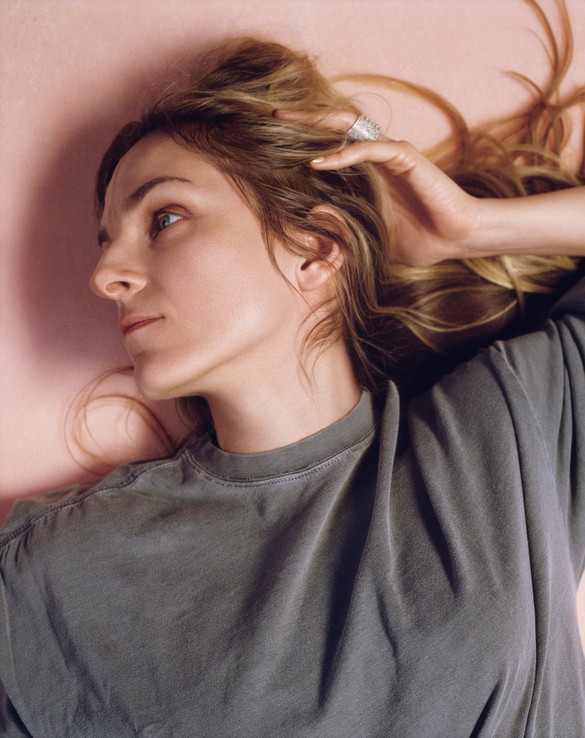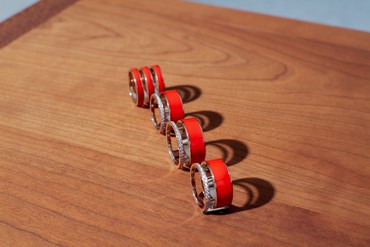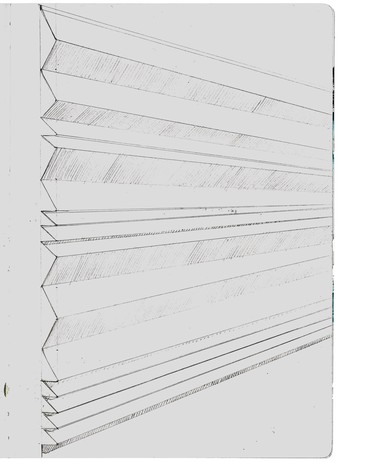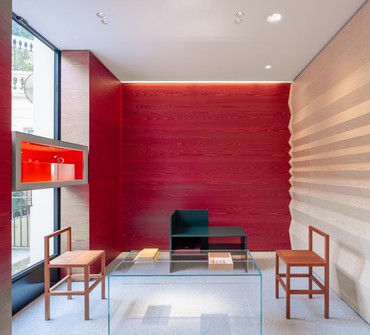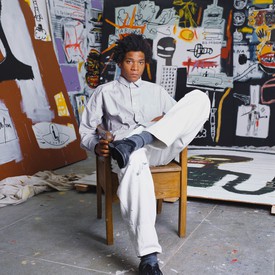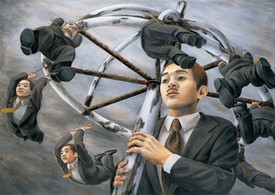
Wyatt Allgeier is a writer and an editor for Gagosian Quarterly. He lives and works in New York City.
Wyatt AllgeierI think it would be great to start with Donald Judd. I know that Repossi is a sponsor of the current retrospective at the Museum of Modern Art, New York, and I understand that Judd’s work resonates with the jewelry collection as well. What was your first encounter with Judd and how did he become such an important artist in your universe?
Gaia RepossiI studied painting at the Beaux-Arts of Paris, but unfortunately the American Minimalism movement wasn’t taught much. It was only later, when I was living in the States, that I discovered Donald Judd’s work through my partner, Jeremy Everett. I related instantly to the aesthetic—it’s timeless. It was an honor every time I had a chance to visit a location such as Marfa or 101 Spring Street and see the work in person, often introduced by Flavin or Rainer Judd themselves; the repetition and the systems never get dull. Immediately all of these things echoed with the way I think and the aesthetic that I’m drawn toward.
WAIn terms of the process of creating each of your collections, is there a mood board? How does that process start?
GRWell, it’s different each time. What I do is an applied art; it’s not fine art. I’m collaborating with artisans, working at a micro scale within the constraints of materials and techniques. I learned this at a very young age.
I generally begin the design process with a pattern in mind. It often starts by things I see in the street, but sculpture is also an influence. Then I transcribe the pattern into a ring, a cuff, wires, and hardware.
WADo you take photographs walking around? Or do you have a sketchbook that you keep with you?
GRI have both. Photography plays a vital role in the process. My phone is an essential resource. Every time I fly, I sort through all of the images I’ve captured and organize them into categories. You know, these could inform pendants, these could inform a cuff. I have thousands of files at the start and then I trim and arrange them in a way. Afterwards, I sketch. At that stage, it’s purely about form.
WAEarlier, you mentioned studying fine art in college. I understand that you also studied archaeology and anthropology. I’m curious what drew you to those subjects and how they continue to feed the ethos of Repossi.
GRI first studied fine arts, but because of work I couldn’t keep the same schedule, so I went to study archaeology. It was an unconscious move; I was drawn to it without knowing why. The study of culture in civilizations throughout human history—the aesthetic thirst for knowledge every civilization has had—continues to inspire me. Of course, there’s a lot of jewelry in archaeology. These objects remain through time. I studied anthropology as well, which unveiled the influences and connections between past civilization and the remnants of our unconscious mind. Jewelry is an important part of this, because it’s an aesthetic language on the body. I value the craftsmanship of jewelry, the value of the stone, the beauty of the materials, of course, but there’s more to it than that. It’s an ancestral tradition that goes way beyond our modern concept of “dressing up.”
WAYou have also worked with a lot of architects. You’re very involved with the creation of each of the stores. Who did you work with for your redesign of the Monaco store?
GRThe store was designed in collaboration with Flavin Judd. The project started very naturally. When I first got really driven by Judd’s work and discovered the furniture, I slowly started ordering it for myself, and then for my office. When we worked with Rem Koolhaas for the store in Paris, on Vendôme, they were like, “We don’t design furniture, so can you please select and curate?” So I proposed Judd, and they loved it. We had a few Judd pieces, and that’s how we started connecting with the Judd Foundation. When the Spring Street space in New York reopened a couple of years later, I had a tour visit by Rainer Judd. I met Flavin after, and we became friends. We spoke about the store, and after working on a personal project that is coming soon I said, “Would you be interested in curating the design and helping us work on a retail proposition?” That’s how it started.
WAThe result is beautiful. It’s a retail space unlike any other; it engages the person visiting in a totally different way. I’m curious what your philosophy is about the future of these physical spaces.
GRThe decision to work with Rem Koolhaas in Paris was a very conscious statement. His book Junk Space had a profound impact on me. It’s sixty pages denouncing bad public spaces, and our civilization being drawn into these spaces that are not very elevating for the spirit and the soul. Rem also has a philosophy that he writes about a lot in his books, how he went from the study of royal stairs in palaces to the democratic small stairs. Within a contemporary vision of a retail space, there is a desire for a sort of democratic openness—it’s a French saying, I don’t know if it works in English—it means that you take something over the top, lush and luxurious, and you bring it to a modern, more realistic reality. The jewelry is doing that, too—it’s jewelry that’s simpler, driven to a reality that is different from the reality of a hundred years ago.
WA I’m curious if there are other contemporary artists who breathe new life into your discoveries and your creation?
GRFor the work I do, I’m very driven by photography in general; it plays an important role for me and for the brand in expressing a sincere statement. So definitely the work of people like Wolfgang Tillmans. Robert Mapplethorpe as well, especially in the ’60s, when Polaroids were very important.
Also the colors and the collages in Sterling Ruby’s work. And Franz West. In the Monaco store we have lots of color—we have the primal structure of Judd, and with Flavin we chose a lot of mint for the displays, and a little pink. It reminds me a lot of the work of Franz West.
